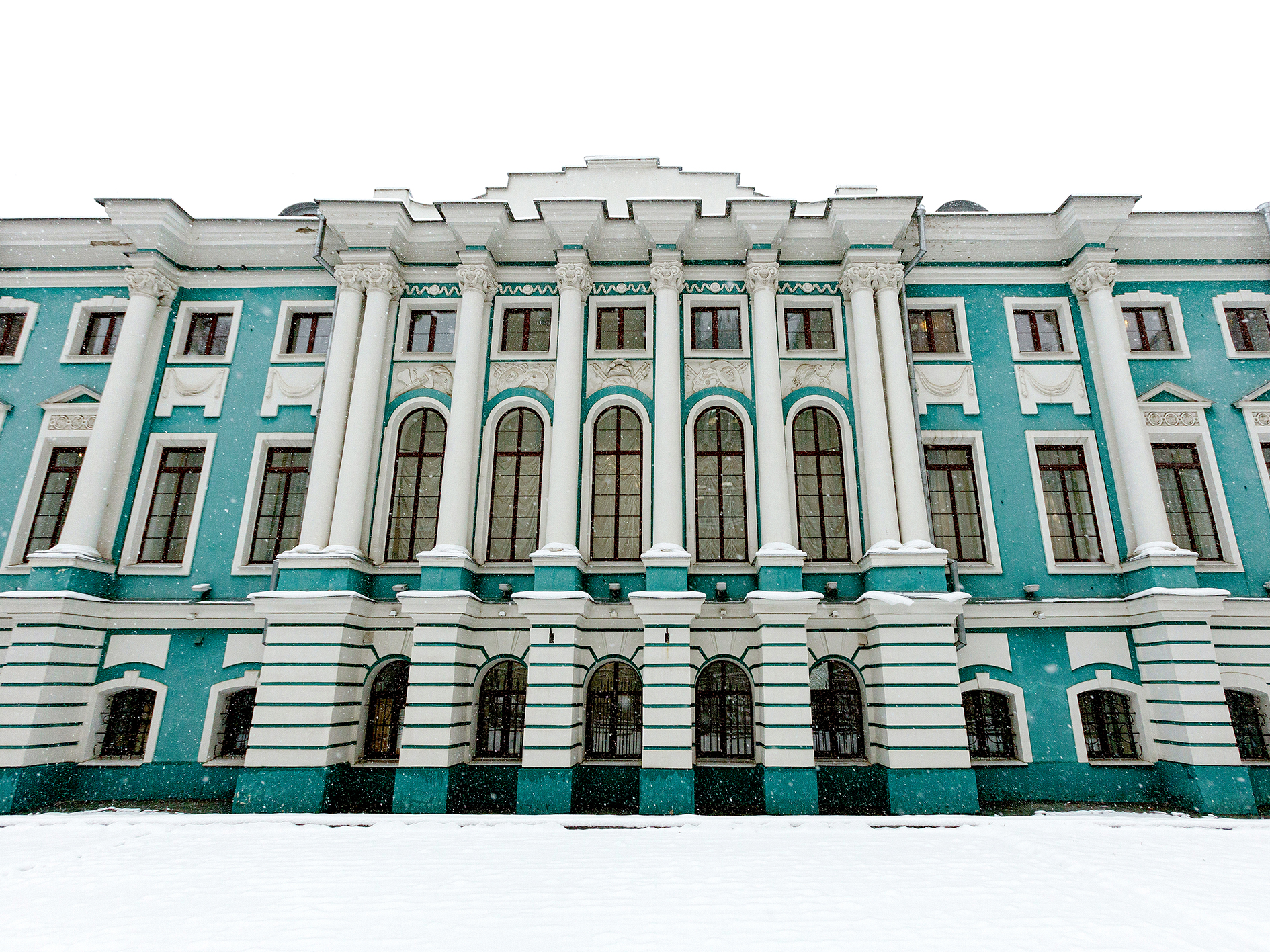

The permanent exhibition of the museum is located in a magnificent building of the late XVIII century and presents collections of Ancient Egyptian and antique art, Russian art of the XVI – XXI centuries, Western European art of the XVI – XIX centuries, collections of porcelain and decorative and applied arts.
An excursion service is provided at the exposition by appointment: +7 (473) 255-38-67.
ANCIENT EGYPTIAN ART
The central exhibit of the museum exposition and one of the best ancient Egyptian monuments in Russian museum collections is the sarcophagus of the royal scribe Nesipacherentakhat (XI – X centuries BC, XXI dynasty). An important place in the collection is occupied by a complex of objects from Deir el-Medina, the village of builders of royal tombs in Thebes. Created during the reign of the pharaohs of the XIX and XX dynasties: the stele of Ramos, the bust of ancestors, funeral statuettes-ushebti (“defendants”), amulets and miniature statuettes of deities are a vivid example of the art of ancient masters.
ANTIQUE ART (TEMPORARILY CLOSED)
The Department of Ancient Antiquities includes more than 500 monuments representing the culture and art of Ancient Greece, Ancient Rome, and the colonies of the Northern Black Sea region. The earliest of them date back to the first half of the VIII century BC, the latest ones were created already in the II century AD. Of particular value is the museum’s collection of antique vases, which includes excellent examples of the main styles of antique vase painting.
A rare example of authentic Greek sculpture is a marble female torso (V century BC), made in the tradition of high classics. The art of Ancient Rome is represented by a small collection of fine plastics and marble sculptures.
RUSSIAN ART OF THE XVI – XX CENTURIES
The museum’s collection of Russian art covers the period from the late Middle Ages to the beginning of the XXI century and reflects its main stages and styles.
The exhibition is opened by the icon “Archangel Gabriel”. Images of two higher angels, Michael and Gabriel, are traditionally included in the deesis rank. Gabriel is the messenger of God’s will, the evangelist to the Virgin Mary.
The XVIII century is a turning point in the history of Russian art, when it acquires a secular character and masters the European experience. New types and genres of art are emerging, an Academy of Arts is being established, and Russian artists are getting the opportunity to study abroad.
The XVIII century is the century of the portrait. In this exhibition you will see a parsuna depicting Evdokia Lopukhina, and ceremonial portraits of Prince Mikhail Golitsyn and Count Nikolai Sheremetev.
The collection of landscapes of the XIX century opens with the works of Fyodor Matveev and Sylvester Shchedrin — painted during retirement trips, they are examples of classical landscape with its inherent balance of composition and conventionality of color.
Russian art of the second half of the 19th century is represented by genre works by Akim Karneev, Vasily Bovin, spectacular landscapes by Julius Clover and Arseny Meshchersky. A special page in the history of Russian art is undoubtedly connected with the Association of Traveling Art Exhibitions. At the exhibition you will see sculptures by Eugene Lancere and Mark Antokolsky, paintings by Ivan Kramsky, Ilya Repin, Eugene Dukker.
The variety of ideological and stylistic searches of the early 20th century is represented by the works of Russian impressionists: Elena Kiselyova, Viktor Borisov-Musatov and Peter Nilus.
WESTERN EUROPEAN ART OF THE XVI – XIX CENTURIES
The collection of works of foreign art traces the features and main styles of the national schools of Italy, Germany, France, and the Netherlands.
The exposition of Italian art of the XVI–XVIII centuries includes a copy of the early Renaissance altar of Gentile da Fabriano “Adoration of the Magi” (1423, Uffizi), made by an unknown artist in the early XIX century. The painting “Madonna with the sleeping Baby” (about 1515) by the Sienese master Andrea del Piccinelli (Brescianino), “Peasant meal” (XVIII century.) by Giacomo Francesco Chipper, “Hermits under a tree” (XVIII century.) by Alessandro Magnasco.
A significant part of the collection of Western European paintings consists of works by artists of the Dutch school. “Breakfast” (1648), Peter Klas, “Self-portrait” (late 1640s) by Samuel van Hoekstraten, “Landscape” by Jacob van Ruisdael (XVII century).
The artistic culture of Germany is represented by the works of Michael Ostendorfer. His Christ board is brilliant in painting and subtlety of drawing – an example of the rarest profile image of Christ. “Portrait of an Old Man” by Franz Lenbach is one of the best works of the Munich painter, a master of psychological portrait, who influenced many European artists of the first half of the twentieth century.
The French art section introduces the works of artists of the XVII–XIX centuries: one of the paired “Battles” of the master of this genre Jacques Courtois (Bourguignon), a landscape with ancient ruins by Hubert Robert, “Protection of the Banner” by Aristide Croisy, famous for creating monuments dedicated to the Franco-Prussian war.
COLLECTIONS OF PORCELAIN AND DECORATIVE ARTS
The exhibition includes decorative vases, table objects, portrait busts made of biscuit. The decoration of the museum’s collection of decorative and applied arts was also made of porcelain from foreign manufactories. Decorative vases made in the style of “Chinoiserie” in Holland (XVIII century), beautiful examples of the Rococo style made by Mason’s masters, works of Sevres manufactory unsurpassed in sophistication of plastic solutions, admire the rigor and simplicity of Wedgwood tableware.
The entrance ticket is 300 rubles.
Discounted ticket (schoolchildren, pensioners, students) – 150 rubles.
BUY A TICKET
(Available on the Pushkin map)
You can also purchase a ticket on Yandex.Afisha